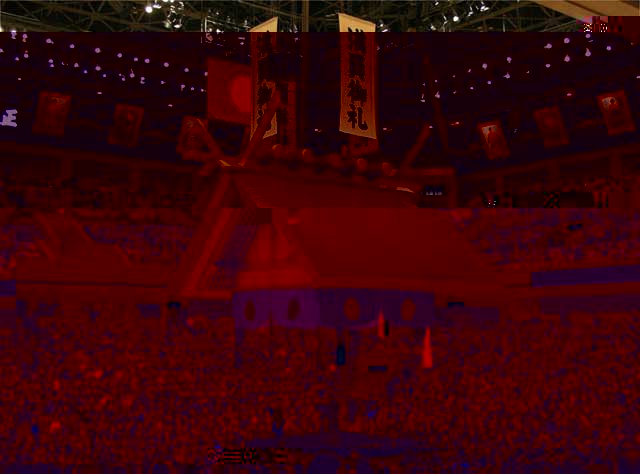
Former yokozuna Kitanoumi doesn't scare easily, but even the big man avoids a dark area of Tokyo's Ryogoku Kokugikan.
The Japan Sumo Association chairman enjoys going for a stroll in the Kokugikan even when sumo tournaments are under way. However, he always avoids the "muko-jomen" (opposite side of the main entrance) in his wanderings.
Asked why, Kitanoumi said, “That’s because … You know the reason, don’t you?”
Many people, including myself, have had frightening experiences in the area. However, the reason for the mysterious occurrences is still unknown.
In the Kokugikan, sumo wrestlers’ dressing rooms are located on the muko-jomen. The passageways to the dressing rooms from the sumo ring are called, “hanamichi” (flower roads). A press room is located at the end of the eastern hanamichi.
One night in December 2010, I was the last person to leave the press room, shortly after 8 p.m.
According to the rule of the press room, the last person to leave has to lock the door. After leaving, I remembered the rule and returned there. Taking the key and locking the door, I again began to walk from the room.
After a few steps, I felt a shove in the back by what seemed to be a big, round and resilient thing—like a volleyball. As the push came suddenly, I stumbled.
Thinking that someone was pulling a prank on me, I shouted, “Hey!” and looked back. But no one was there.
Holding my bag firmly, I ran at top speed along the sumo ring and ducked into a clerks’ room where several people were working overtime.
Seeing the look of fear on my face, office clerks and security guards gathered around me. When I explained the terrifying experience to them, however, none were surprised. They only nodded calmly with their arms crossed.
Then, one of them said, “It is the first time that an incident took place in the eastern hanamichi, isn't it?” The remark apparently meant that similar incidents have occurred in other parts of the building in the past.
“What?” I shouted.
According to them, many people have experienced unexplainable incidents around the muko-jomen.
One of them said, “When I was urinating in a lavatory, I was pulled from behind.”
Another said, “Sounds of 'keiko' (exercise) were heard from a dressing room despite the fact that no one was in there.”
Those experiences do not have any similarities except that they have taken place in the Kokugikan. The reasons for the incidents are not clear, either. Some people only laughed when they heard about the mysterious stories.
However, even security guards do not approach the muko-jomen at night except for when they are on their patrols.
The areas around the Kokugikan sumo arena, located in Ryogoku district of Sumida Ward, have repeatedly suffered disasters in the past, including earthquakes and wartime air raids. Among those disasters, one that is closely related to sumo is a fire in 1657, which is called the “Meireki no Taika” (Great fire of Meireki period).
The fire destroyed most of the downtown areas in Edo (modern-day Tokyo), including Edo Castle. As many as 100,000 people may have perished in the disaster. It is believed that the area around the current Kokugikan site was one of the places where unidentified bodies were placed.
The Ekoin temple, located near the Kokugikan, was constructed to hold memorial services for the victims of the great fire. Fund-raising sumo championships that started in the temple have led to the current sumo wrestlers’ tournaments held in the Kokugikan and other arenas across the nation.
The history is known only among those who are well-versed with sumo. When thinking about the history, some people may have been under an illusion in the stately atmosphere of the Kokugikan that mysterious incidents have occurred.
A staff member of the Kokugikan said, “I have heard about the (terrifying) stories. But I don’t have any such experiences.”
Then, he added, “If some people may have had such experiences, the incidents were probably caused by someone like a guardian god of sumo. I can say so because we have conducted traditional Shinto rituals for purification many times.”
Tuesday 14 May 2013
http://ajw.asahi.com/article/sports/sumo/AJ201305140012

0 comments:
Post a Comment